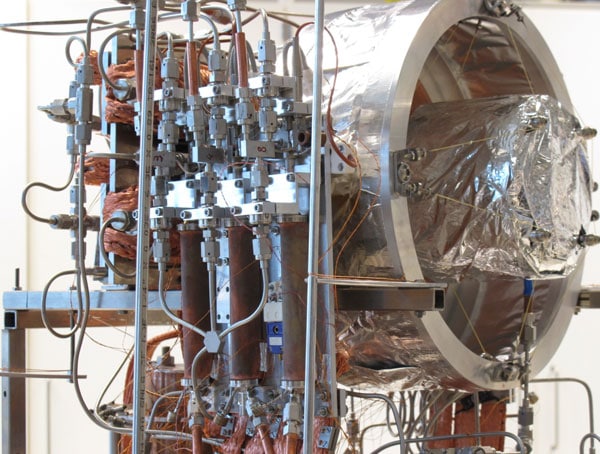
are the compressor cells that operate on the basis of
the cyclic adsorption and desorption of hydrogen gas.
(Image: University of Twente)
Researchers at the University of Twente in the Netherlands have developed a new technology for cooling optical detectors on spacecraft that could help the sensors better detect weak “space signals” that originate from far-away, extremely cold sources. The new development is part of a project commissioned by the European Space Agency.
Current cooling systems use mechanical compressors to help optical detectors reach temperatures of just few degrees above absolute zero (-273°C) in order to measure these signals. However, the mechanical compressors can create vibrations that affect the sensitivity and performance of the optical instruments.
Now, University of Twente researchers from Professor Marcel ter Brake’s chair of the Energy, Materials and Systems (EMS), part of the university’s Faculty of Science and Technology (TNW), have combined the abilities of a hydrogen gas cooler and a helium-based cooler to reach a temperature of five degrees above absolute zero without generating disruptive vibrations.
According to the university, the technology has already completed testing and is in the process of being modified to withstand forces generated during lift-off. Further development on the technology is also in process for installation in the European Extremely Large Telescope (E-ELT) located in Chile. The telescope will become operational in 2018.
For more information, visit the University of Twente






